The Tortures of the Spanish Inquisition Hold Dark Lessons for Our Time
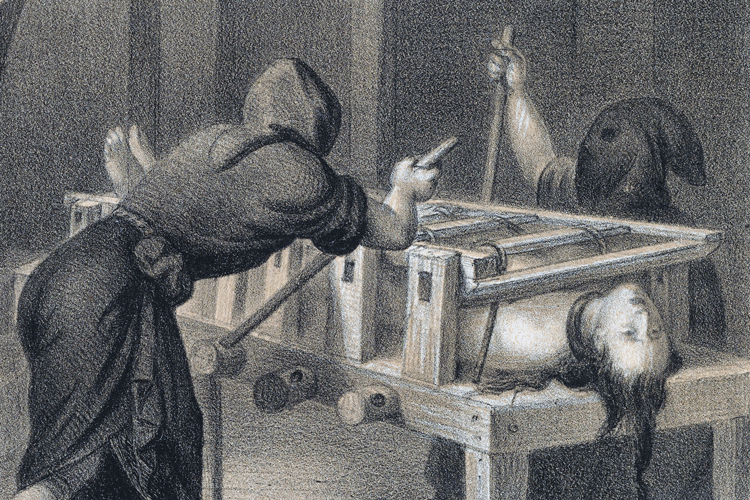
In the catacombs of the Bancroft Library, in a chilled, climate-controlled vault, is a 1,300-page document that tells the horrors of Manuel de Lucena’s life and death as a clandestine Jew during the Spanish Inquisition. In black ink on old parchment, scribes some 400 years ago penned the details of his lengthy imprisonment and his coerced testimony, along with the interrogation and torture of other Jews implicated in the investigation.
In the end, de Lucena and members of his family, and countless others, admitted their guilt and incriminated those they loved, and were then burned at the stake.

This grim account is a central exhibit in a powerful new book by Ron E. Hassner, a UC Berkeley political scientist and scholar of the history of war. Anatomy of Torture (Cornell University Press, May 2022) is, in part, a telling of how the Roman Catholic Church, backed by Spanish King Ferdinand II and Queen Isabella I, used physical and psychological torture systematically to crush communities of Jews, Muslims, Protestants and others seen as heretics.
But Anatomy is also a story of the early 21st century — the time following the terror attacks of Sept. 11, 2001, and the subsequent invasion of Iraq, when a panicked and angry nation increasingly employed torture and justified its cruelty as essential for security.
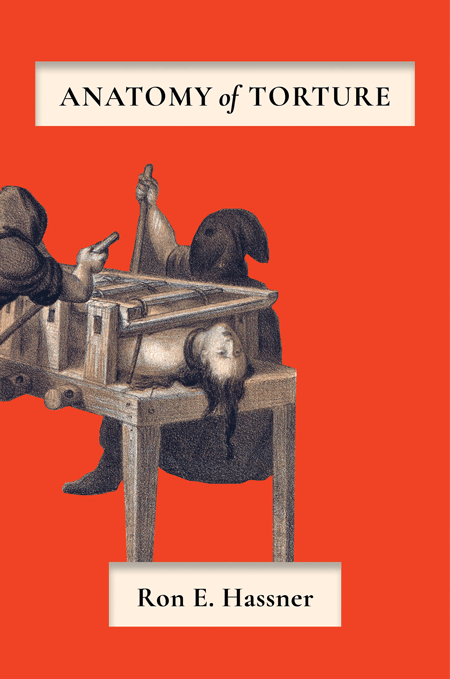
In probing the practices of the Spanish Inquisition, Hassner makes a devastating argument against America’s use of torture four centuries later. In distilling that story, though, he comes to an understanding that is deeply disquieting and likely to provoke both proponents of torture and human rights advocates.
Hassner is not shy of controversy. At UC Berkeley, his research has focused on religion and violent conflict — religion in the military and on the battlefield, and strife over holy shrines. He teaches a class on war in the Middle East, a minefield of a course, but hugely popular.
In a recent interview, Hassner said he was motivated to write Anatomy by the “the ill-informed and politicized nature” of the debate in the United States. But, he acknowledged, such work is morally fraught.
“There is great uneasiness in studying torture,” he said, “if only because there is only so much one can learn from 400-year-old cases about torture today. The comparison ought to be conducted with extreme caution and trepidation. At the same time … it’s important to place some facts on the table.”
A story of anguish, told in ink, parchment and grains of sand
The Spanish Inquisition began in 1478, and for more than 300 years it pushed aggressively to repress what the monarchy saw as heresy. The Inquisition pursued its mandate in Spain, Portugal and across the Spanish colonies, including Mexico. It particularly targeted Jewish “conversos” — Jews who had been compelled to renounce their Judaism and to convert to Catholicism, but who secretly continued Jewish religious practices.
Manuel de Lucena was one of them — a leader in a community of Mexico City conversos who quietly, but steadfastly, maintained their Jewish faith.
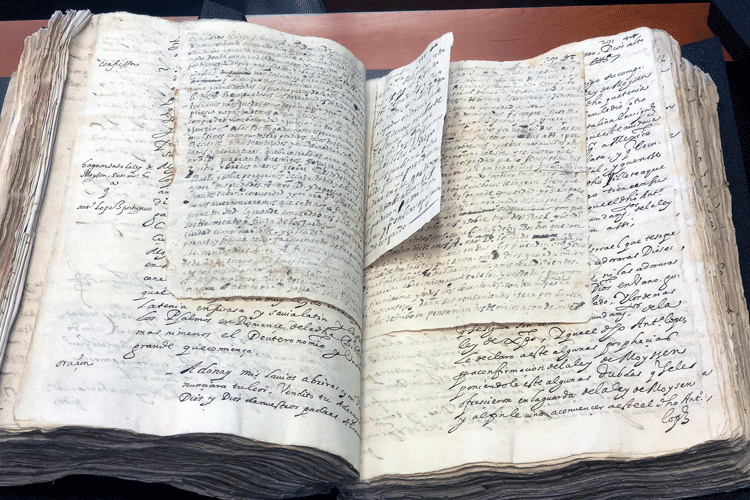
Hassner unearthed the story of his life, and his death, during long sessions sitting with the Inquisition’s 1,300-page account of the case. These pages had been written by scribes who attended the torture sessions in which suspected heretics had implicated de Lucena. They attended his interrogations, recorded his confessions and took the names of over 100 other conversos de Lucena accused of joining in heresy.
The scribes had used fine sand to soak up the excess ink on the parchment pages, and as Hassner sat reading in a room at the Bancroft, this sand sifted from the leather-bound book onto his lap.
De Lucena had not been tortured in the formal sense. He suffered no sessions on the rack. But Hassner imagines that years in a dungeon, long periods of isolation and constant fear broke him down. “It was,” he said, “torture in all but name.”
The cruelest tortures turned into a bureaucratic function
Antique engravings offer a macabre vision of Inquisition torture chambers: inquisitors masked in leather inflicting pain with cruel abandon. But Hassner, after reading thousands of pages of documents in Europe, Mexico and the U.S., came to a different understanding.
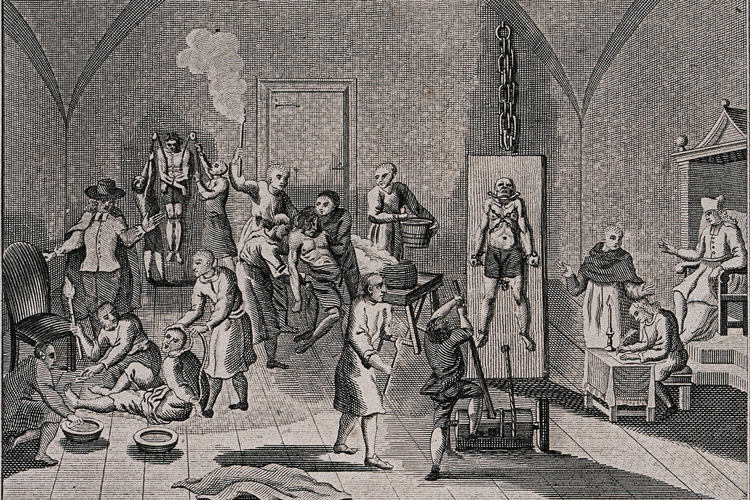
Yes, the Inquisition used torture — on men and women, young and old. But the torture wasn’t used to punish heretics. It wasn’t used primarily to extract confessions. It wasn’t used as a tool of genocide, nor expressly to break the will of individuals or communities, as Iraq and El Salvador used it in the late 20th century.
Above all, Hassner says, torture during the Spanish Inquisition was not reckless. After building decades of experience, the authorities used torture systematically, almost scientifically. It was, he says, “bureaucratized.”
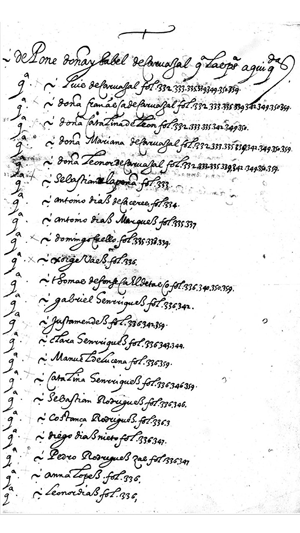
Here, Hassner makes a crucial point: Agents of the Inquisition did not believe that a quick, intense turn on the rack could provoke subjects to reveal their secrets. They knew that victims, desperate to escape the pain, often dissembled or told torturers what they wanted to hear.
For that reason, they knew that information obtained through torture often was not reliable.
Their orientation to torture was therefore shaped by skepticism: They built their cases patiently, gathering information from a variety of sources, using a variety of methods. With any given subject, they used torture only intermittently, in sessions sometimes months apart. Their main goal was not to compel a confession or a profession of faith, but to extract factual information that would confirm or corroborate information already in hand.
Which leads to another critical assertion: Torture, used as the inquisitors used it, was vicious and dehumanizing but, Hassner found, it often achieved its objectives. Torture victims revealed truthful information that they had refused to reveal before torture. Information extracted in the torture chamber matched information provided by uncoerced witnesses and material evidence found in the homes of conversos.
Put simply: Torture worked.
After 9/11, the spectacular failure of ‘hot-blooded’ torture
The conclusions are troubling, certainly. But insights from an era of religious repression, four centuries past — why would they matter today?
In Anatomy, Hassner draws a direct line from the tortures of the Inquisition to the fierce, but unresolved, arguments about U.S. torture that persist today in national security and human rights communities.
After the al-Qaida terror attacks of Sept. 11, 2001, in a climate of fear that verged on paranoia, the stakes seemed acutely clear: If we knew that an attack was planned on U.S. interests or U.S. citizens, how far would we go to prevent it? If the clock were ticking, and time were running out, wouldn’t torture be justified?
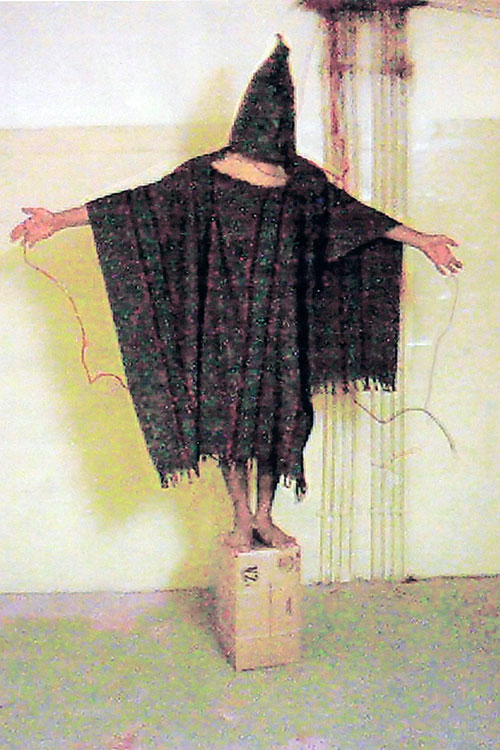
Leaders in the administration of then-President George W. Bush determined that it was. And once that door opened, torture proved contagious, culminating after 9/11 in the program of “extraordinary rendition,” in the disclosures about U.S. torture at the Guantanamo Bay Naval Base, and a few years later at the Abu Ghraib prison during the Iraq War.
Some counterterrorism officials have argued that the harsh treatment led prisoners to divulge information that allowed the U.S. to thwart attacks and save lives. But there is much dispute about that. Even if it’s true, critics say, the costs were devastating: wrongful arrests, prolonged detention in abusive conditions and outright torture — all of which profoundly damaged the nation’s moral authority at home and abroad.
Hassner seems to come down on the side of the critics. In his view, the U.S. torture was often undisciplined and even sadistic, intended merely to punish, to inflict physical and emotional pain. “This was hot-blooded torture,” Hassner has written, “and it failed, by and large.”
Even when torture was more systematic, its failure could be spectacular. Hassner recounts the little-known story of Libyan national Ibn Sheikh al-Libi, who was captured in Pakistan soon after 9/11. Under torture, al-Libi told his U.S. interrogators that Iraqi leader Saddam Hussein had provided al-Qaida with weapons of mass destruction. The Bush administration used his account to justify the U.S. invasion of Iraq in 2003.
In fact, al-Libi knew nothing of that subject — he had invented the story to stop the pain.
And yet, Hassner is critical also of the usual arguments against torture. Like those who argue in its favor, he writes, the opponents often lack a strong foundation in facts. When arguments are not grounded in fact, they are not persuasive, and that can lead to bad policy — and to abuse.
If torture, as practiced in the Spanish Inquisition, can yield useful intelligence, where does that leave today’s human rights advocates, who insist that torture simply doesn’t work?
Can we have a pragmatic discussion about torture?
Hassner’s book, in a fundamental sense, is a pragmatic assessment of how torture is used in interrogations. At first blush, that seems reasonable, but then a shock rises, and the voice of conscience says: No, absolutely not — there is nothing pragmatic about torture, ever.
Because if torture is a pragmatic consideration, that suggests implicitly that it can be justified. And some people inevitably will take this as a license to torture.
Better, the conscience says, to leave this knowledge buried in the vaults at Bancroft Library, or wherever it might be found, so it can do no harm.
But Hassner is a realist, and the reality is that torture is always an option. He’s not saying that it’s just, or justified. Rather, he’s saying that the argument that torture does not work is a weak argument — too weak to prevent its use.
“There is a moral hazard in studying any form of political violence,” he says, in the interview, “but there is an even greater danger in making bad policy based on wishful thinking. As political scientists, we’re obligated to study nuclear weapons, assassination or genocide carefully and dispassionately. We don’t claim that these things are immoral because they don’t work. We know they are immoral regardless of how well they work.”
This, he says, is the argument torture opponents should be making: Torture is so cruel, it is so dehumanizing to both the tortured and the torturer, that it is always wrong, unconditionally.
“If torture is evil,” he writes, “its efficacy is irrelevant. Those who know it to be evil should reject torture outright, regardless of how efficacious it may or may not be.”
Even in a world shaped by brutal power competition and extreme conflict, this argument is forceful because it speaks to our common humanity and our shared moral values. Similar arguments have almost always been sufficient to prevent ethnic cleansing, genocide and nuclear war.
In our imperfect world, Hassner says, that is the strongest argument against torture. But it leaves us to live on a knife’s edge, hoping the argument holds in times of challenge.
The Inquisition’s hidden lesson for our time
Anatomy is an exploration of how the experience of the Spanish Inquisition can inform modern policy and moral debates about torture. But another theme weaves through Hassner’s pages, and though never directly addressed, it’s urgent, nonetheless.
The Inquisition’s repression of Jews, Muslims and Protestants was one of the most grotesque and shameful epochs in Roman Catholic history, and perhaps in the history of any religion. Of course, the era of the Inquisition was far different from our own. Other European governments routinely tortured, slavery was legal, and cruelty as a feature of social relations generally was more pervasive.
Still, the Inquisition is instructive because it shows that when state power merges with religious power, authorities can impose their mandate by force, imagining that cruelty has a divine endorsement.
While humanity has come a long way since then, such inclinations may be innate. In a nation and a world where civil and cultural conflicts are increasingly sharpened by sectarian grievance, the Inquisition reminds us of where that can lead.
Anatomy of Torture will be the subject of a special book launch and exhibit at UC Berkeley’s Magnes Collection of Jewish Art and Life from Oct. 18-20, 2022. The de Lucena manuscript and other ancient texts, along with related Inquisition artifacts from the Berkeley collections, will be on display for public viewing. For information, please contact Ron Hassner.
